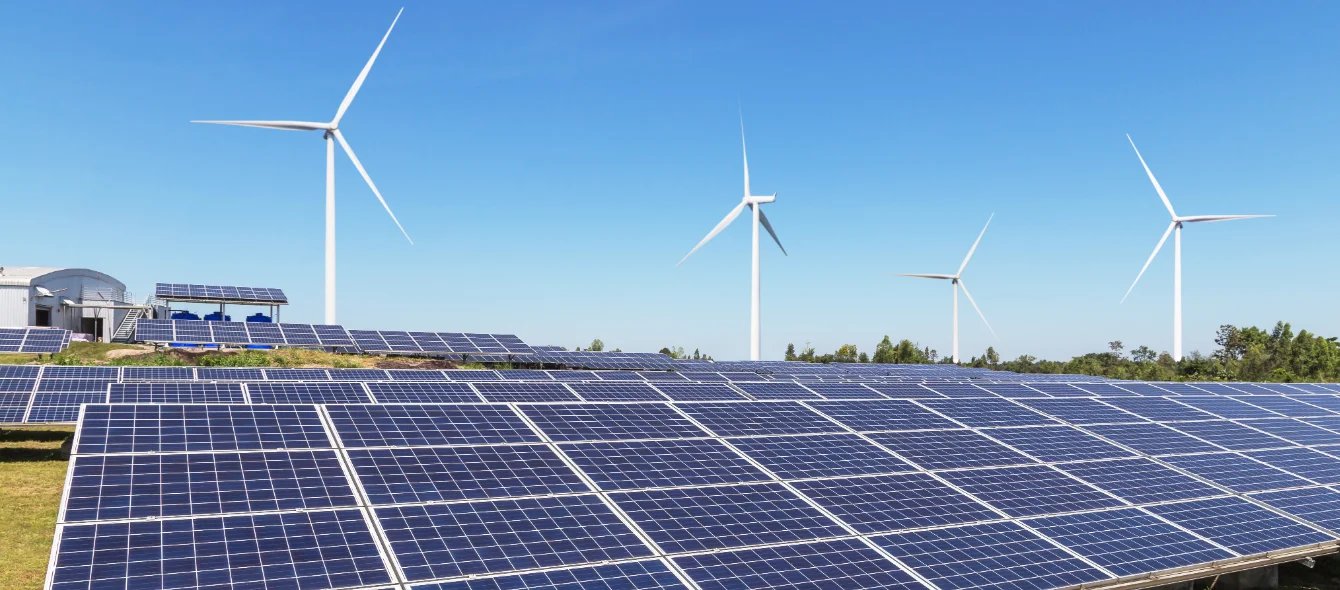Most are familiar with the principle of a hybrid car: it combines the benefits of an electric drive with those of an internal combustion engine. Hybrid power stations are based on a similar concept: they use several energy sources to generate electricity.
One of the first large-scale hybrid power plants powered by wind and solar energy is currently being built in the Netherlands where Swedish energy group Vattenfall is supplementing its Haringvliet wind farm, which is under construction, with a solar panel array and a battery storage system.
The 38-megawatt (MW) PV system is being built by RWE subsidiary Belectric. The wind farm consists of six Nordex wind turbines with an aggregate installed capacity of 22 MW, the battery storage system is designed to output up to twelve megawatts. It will be a ‘second-life battery,’ made of scrapped BMW EV batteries. The integrated system is slated to go online this year.
Wind and sun take turns producing power
“This combination makes absolute sense,” says Thorsten Lenck, electricity expert at the Agora Energiewende think-tank, adding, “Solar and wind generation profiles complement each other rather well.” In other words, it is usually less windy when it is sunny than under cloudy skies and vice-versa. And this applies when comparing both seasons and individual days, adds Lenck, “Wind speeds are generally higher in the winter than in the summer. And no matter the season, sunny days are always less windy.”
As a result, the hybrid power plant should be capable of putting power on the system much more consistently than a wind or solar farm can. And the battery storage enhances this benefit: Whenever the generation units produce more power than needed, the electricity can be held in temporary storage to bridge periods of low production.
Moreover, the operator can use the battery storage system to provide balancing power. This involves siphoning excess electricity from the grid and providing the necessary feed-ins – all in a matter of seconds. This is thus another way to contribute to grid stability.
The 2019 generation profiles show how wind and solar power complement each other
Source: 50 Hertz, Amprion, Tennet, TransnetBW via Fraunhofer ISESynergies reduce energy transition costs
One can of course benefit from alternating wind and solar energy peaks without a hybrid power station. The energy sources don’t particularly care whether they generate electricity as a collective or distributed among several power stations. And, according to Lenck, it is irrelevant to wholesale electricity prices where the power is put on the system.
However, the location of feed-ins is not at all irrelevant to the power grid. This is why Lenck feels the synergistic effects of such hybrid power plants primarily relate to grid usage: “The more consistently a grid connection is used, the lower the costs per kilowatt hour.” Experts know that the more consistently electricity is generated at one location, the more seldom it has to be obtained from remote sites. This reduces the need for transmission capacity.
Hybrid power stations not envisaged in the compensation system
It remains to be seen whether hybrid power plants actually work like this. However, if the above scenarios play out, these assets could use solar and wind power to help minimise the costs of the energy transition.
Providing appropriate incentives would not even require dedicated subsidy programmes, as Lenck believes an adjustment of the tender regulations would suffice: “Right now, basically the only factors playing a role when participating in green electricity auctions are price and feed-in volume,” he explains. “If continuity of grid load were made a criterion instead, hybrid power stations would have an automatic advantage.” This should benefit consumers as well. After all, they pay not only for the electricity, but also for the construction and operation of the power grids.
